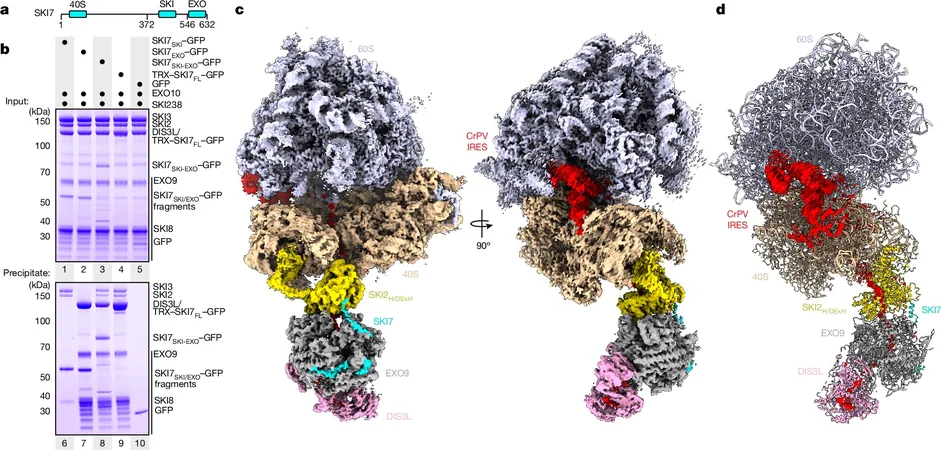
Groundbreaking Study Reveals Safe Path to Macrolide Allergy Tolerance in Children!
2024-10-11
Author: William
In a remarkable new study, direct graded oral challenges (GOCs) are turning the tide for young patients suspected of having macrolide allergies. Researchers have found this method to be both safe and effective for pediatric patients displaying non-severe, skin-limited symptoms during macrolide treatment. But could this breakthrough technique also apply to adults? The jury is still out, as more research is needed.
Led by Carly Sillcox, BSc, from the division of pediatric allergy and clinical immunology at McGill University Health Centre in Montréal, the study highlights a crucial gap in pediatric care: the absence of standardized skin tests for diagnosing macrolide allergy. Currently, challenge tests remain the only recommended method to confirm such allergies, making this safety evaluation imperative.
"Assessing the use of direct GOCs for confirming suspected macrolide allergies in children allows us to refine clinical characteristics, management protocols, and risk factors related to genuine macrolide allergies,” noted Sillcox and her colleagues.
The Research Design
Macrolides, which account for around 30% of all oral antibiotic prescriptions, are frequently chosen as alternatives for patients allergic to β-lactams. However, allergic reactions to these antibiotics still occur, often leading to children avoiding macrolides for life due to unaddressed concerns. The "β-Lactam and Other Antibiotics in Children: Tests, Assessment, and Management" study aimed to turn the tide on this potential over-cautiousness.
Over an 11-year span from November 2012 to November 2023, the research team focused on participants aged 18 and younger suspected of having macrolide allergies. Participants were recruited from allergy clinics in both the Montreal Children’s Hospital and the Janeway Children’s Health and Rehabilitation Centre in Newfoundland and Labrador.
The GOC procedure consisted of two steps—starting with a 10% dose of the suspected macrolide followed by a 90% dose after a 20-minute observation period. Participants who exhibited no symptoms after an hour were classified as tolerant. Those showing any immediate reactions received appropriate treatment.
Families were instructed to monitor for any delayed symptoms within a week post-challenge, and the research team gathered extensive data on suspected allergic reactions through standardized questionnaires.
Key Findings
Out of 112 children diagnosed with macrolide allergies, a compelling 90.2% tolerated the GOC without issues. Clarithromycin and azithromycin emerged as the two most implicated macrolides, with 72.3% and 27.7% of participants, respectively.
While a small percentage experienced immediate reactions, only one child suffered anaphylaxis, which was effectively managed with intramuscular epinephrine. Notably, all other reactions were limited to skin rashes, avoiding severe consequences.
Interestingly, researchers found that older children (over 12 years) were more likely to have positive GOC results, as were those with allergies to other antibiotics. Conversely, children with known food allergies had lower chances of experiencing allergic reactions, offering new insights into allergy management.
At follow-up in January 2024, it was revealed that about 17.4% of participants with negative GOC results safely used the controversial macrolide without experiencing adverse reactions.
While the researchers acknowledged that recall bias could be a study limitation, they emphasized the relatively short time frame between the reported initial reactions and GOC recruitment, which helps mitigate potential inaccuracies in recollection.
With advancements in understanding macrolide allergies and safe testing methods, parents can breathe a sigh of relief—future generations might not need to live in fear of common antibiotics! This study opens up new pathways for pediatric care, ensuring children with suspected drug allergies receive the best treatment options available.
Keep an eye out for this important field as more studies emerge, potentially reshaping how we approach antibiotic allergies in children!









 Brasil (PT)
Brasil (PT)
 Canada (EN)
Canada (EN)
 Chile (ES)
Chile (ES)
 España (ES)
España (ES)
 France (FR)
France (FR)
 Hong Kong (EN)
Hong Kong (EN)
 Italia (IT)
Italia (IT)
 日本 (JA)
日本 (JA)
 Magyarország (HU)
Magyarország (HU)
 Norge (NO)
Norge (NO)
 Polska (PL)
Polska (PL)
 Schweiz (DE)
Schweiz (DE)
 Singapore (EN)
Singapore (EN)
 Sverige (SV)
Sverige (SV)
 Suomi (FI)
Suomi (FI)
 Türkiye (TR)
Türkiye (TR)